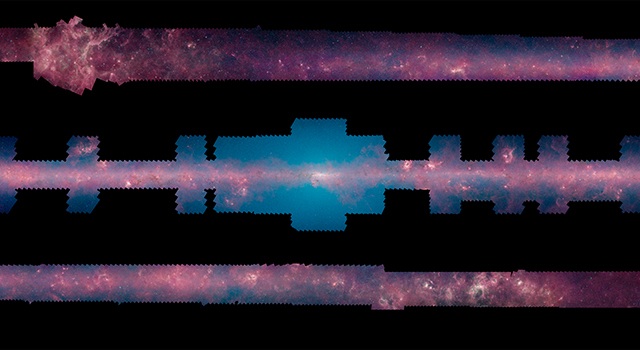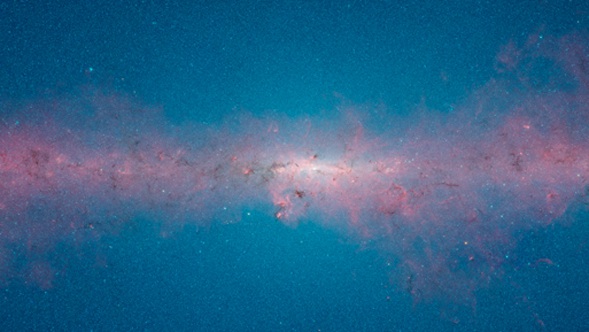It looks like you're using an Ad Blocker.
Please white-list or disable AboveTopSecret.com in your ad-blocking tool.
Thank you.
Some features of ATS will be disabled while you continue to use an ad-blocker.
21
share:
This is so awesome!

A billboard as big as the rosebowl would be needed to print this out.
It shows half of the Milky Ways stars!
Source
Here's a link if you want to join in
Space is beautiful

Source

A billboard as big as the rosebowl would be needed to print this out.
It shows half of the Milky Ways stars!
Touring the Milky Way now is as easy as clicking a button with NASA's new zoomable, 360-degree mosaic presented Thursday at the TEDActive 2014 Conference in Vancouver, Canada. The star-studded panorama of our galaxy is constructed from more than 2 million infrared snapshots taken over the past 10 years by NASA's Spitzer Space Telescope.
Spitzer, launched into space in 2003 and has spent more than 10 years studying everything from asteroids in our solar system to the most remote galaxies at the edge of the observable universe. In this time, it has spent a total of 4,142 hours (172 days) taking pictures of the disk, or plane, of our Milky Way galaxy in infrared light. This is the first time those images have been stitched together into a single, expansive view. Our galaxy is a flat spiral disk; our solar system sits in the outer one-third of the Milky Way, in one of its spiral arms. When we look toward the center of our galaxy, we see a crowded, dusty region jam-packed with stars. Visible-light telescopes cannot look as far into this region because the amount of dust increases with distance, blocking visible starlight. Infrared light, however, travels through the dust and allows Spitzer to view past the galaxy's center.
Source
Here's a link if you want to join in
Space is beautiful

Source
edit on 21-3-2014 by Jennyfrenzy because: Add pictures and another link plus a spelling error
It truly is awesome.
But what isn't awesome is that we have this technology, but can't find a missing plane on our own planet.
But what isn't awesome is that we have this technology, but can't find a missing plane on our own planet.
I'm tired of this plane thing.
Space is effing awesome, we need to explore it more.
S&F Because space is beautiful!
Space is effing awesome, we need to explore it more.
S&F Because space is beautiful!
edit on 21/3/14 by AzureSky because: (no reason given)
Jennyfrenzy
This is so awesome!
agreed! thank you for this….bookmarked your link for when my boy gets out of school today for a bit of quality time
new topics
-
Hey, people! Where did all the new topics go?
Social Issues and Civil Unrest: 50 minutes ago -
Federal law trumps state and local law every time
Social Issues and Civil Unrest: 11 hours ago
top topics
-
Federal law trumps state and local law every time
Social Issues and Civil Unrest: 11 hours ago, 16 flags -
Hey, people! Where did all the new topics go?
Social Issues and Civil Unrest: 50 minutes ago, 3 flags
21
